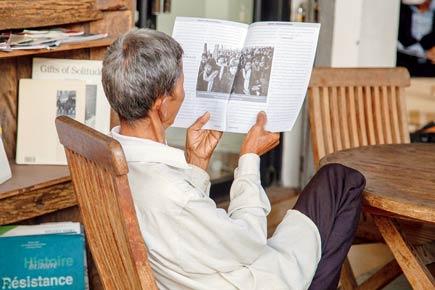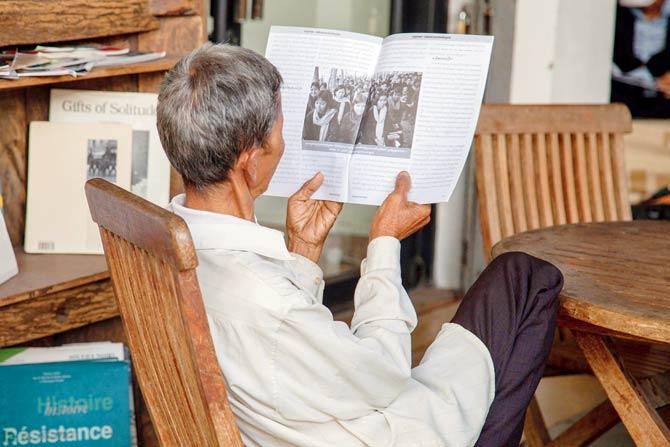The book loving-luddite in me jumped with joy at the news that book sales, in print, are on the upswing

 The book loving-luddite in me jumped with joy at the news that book sales, in print, are on the upswing. Yes they are, says a piece in The Wall Street Journal. And funnily enough because young people prefer the convenience of reading physical books.
The book loving-luddite in me jumped with joy at the news that book sales, in print, are on the upswing. Yes they are, says a piece in The Wall Street Journal. And funnily enough because young people prefer the convenience of reading physical books.
While this may be an aberration or a phase perhaps, it does coincide with one other thing, which talks about consumers’ search for something elusive, gripping and good — the rise in long form reading, and therefore, writing. Or in long form viewing. How many of us have binge-watched well-crafted TV shows such as Game of Thrones, House of Cards or Sherlock. Note also, the rise in live performances as a proportion of the music industries revenues — these took off soon after digital music went through the roof.
ADVERTISEMENT

The rise in long form reading, and therefore writing, points to consumers’ search for something elusive, gripping and good. Representation pic/Getty Images
This column is not about the tired old ‘print versus digital’ or ‘old media versus new media’ debate. It is about our search for good content or interesting experiences around our favourite content (say music) in what looks like a deluge of it across every media we use — phone, TV, print, radio.
Take for instance, The Caravan, a magazine that would have been unthinkable in India till five years ago. The monthly magazine, priced at R75, was launched in 2010 and carries at least three pieces of an average length of 7,000-14,000 words. This in a market where the longest story in a magazine could be 3,000-3,500 words or, in a newspaper, 1,000-2,000 words. Ask any reporter who fights with his editors for wordage and you will know that anything that takes a full page is considered somewhat sacrilegious. Long reads or long views, however, are not just about length.
The Caravan long reads, for instance, could range from the Essar saga to a profile of Samir Jain (the elusive co-owner of the Times Group) or Nawazuddin Siddiqui (who the magazine discovered in 2012, long before mainstream media). These are very well researched, well-written and offer something that mainstream journalism rarely offers these days — perspective. Anant Nath, editor of The Caravan claims that it gets an average of 600,000 page views a month online. It has a circulation reported to be around 40,000 copies. Those are good numbers for a long form print brand in a market which is shifting to quick, short, breathless, easy reads and short videos.
Much of this reflects what is happening globally, albeit with a five-year lag perhaps. You could argue that for English-speaking people in India, reading The New Yorker or The Atlantic, is an intellectual fashion statement. But, that doesn’t explain why the features from these iconic magazines get retweeted and circulated so much all over. There is something deeper at work here.
On a trip to the UK last month, I had a long chat with Jonathan Shainin, editor, long reads at The Guardian. The newspaper’s long reads are 5,000-7,000 word pieces it puts out thrice a week. The Guardian is one of the few media brands globally that went online very early and has done very well with new media. However, “Digital had changed the metabolism of the paper,” says Shainin. It was doing large numbers of short, quick stories. To balance this breathless pace, the paper introduced long reads last year. A long read story is “autonomous,” says Shainin. It exists to be read by anyone just because it is a good story. Incidentally, Shainin was with The Caravan in its formative years and has also worked with The New Yorker.
Long formats are becoming synonymous with good quality — either because that is the genesis of long form writing and television or because commercial sustenance of this form without superb quality is impossible. Who on earth would have thought that the umpteenth show on Sherlock Holmes could become a global phenomenon — but good writing ensured that.
Reaching out for long form is a way of reaching towards what seems like the best content in a category. It is certainly not about the media — print or TV or digital — it is purely about the content and searching for the satisfaction that a great story gives you. How many times have you had to shake yourself to get out of the world created by a writer in a book or a TV series or an article. How long has it haunted you — in that nice way that the taste of any good meal does. It is about being in a place where you feel truly illuminated, informed or entertained.
That is a good place for any media industry or consumer to be in. More power then to good storytelling.
The writer is a media specialist and author. Follow her on Twitter at https://twitter.com/vanitakohlik
 Subscribe today by clicking the link and stay updated with the latest news!" Click here!
Subscribe today by clicking the link and stay updated with the latest news!" Click here!







